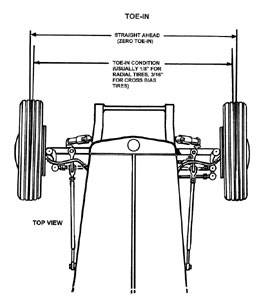With more than a century of steering heritage, Delphi Steering is uniquely positioned to deliver wheel-to-wheel steering system expertise. A full-service supplier, Delphi Steering provides innovative systems designed for security, comfort, and flexibility to vehicle manufacturers worldwide.
Delphi Steering offers full system integration and has one of the most extensive steering product ranges in the industry. Since developing the first hydraulic power steering system in the 1950s, Delphi Steering has been at the forefront of power steering development. Now, electric power steering from Delphi Steering delivers the high performance of traditional hydraulic power steering, with significant added value and fuel economy improvements. Delphi Steering has produced more than 6 million electric power assist steering systems since 1999.
"Our Active Steering Systems are innovative extensions to our existing steering product lines that enhance driver experience and provide increased value to our customers. Delphi Steering is uniquely positioned to offer these features on both electric and hydraulic systems" said David Aden, Steering Systems product line manager. "Advanced feature integration is an important progression in our ongoing effort to provide complete steering solutions to customers worldwide -- these are exciting systems that address a wide variety of driver needs."
Forward-looking statement
This, as well as other statements made by Delphi may contain forward-looking statements, that reflect, when made, the Company's current views with respect to current events and financial performance. Such forward-looking statements are and will be, as the case may be, subject to many risks, uncertainties and factors relating to the Company's operations and business environment which may cause the actual results of the Company to be materially different from any future results, express or implied, by such forward-looking statements. In some cases, you can identify these statements by forward-looking words such as "may," "might," "will," "should," "expects," "plans," "anticipates," "believes," "estimates," "predicts," "potential" or "continue," the negative of these terms and other comparable terminology. Factors that could cause actual results to differ materially from these forward-looking statements include, but are not limited to, the following: the ability of the Company to continue as a going concern; the ability of the Company to operate pursuant to the terms of the debtor-in-possession financing facility; the terms of any reorganization plan ultimately confirmed; the Company's ability to obtain Court approval with respect to motions in the chapter 11 cases prosecuted by it from time to time; the ability of the Company to develop, prosecute, confirm and consummate one or more plans of reorganization with respect to the chapter 11 cases; the Company's ability to satisfy the terms and conditions of the Equity Purchase and Commitment Agreement (including the Company's ability to achieve consensual agreements with GM and its U.S. labor unions on a timely basis that are acceptable to the Plan Investors in their sole discretion); the Company's ability to satisfy the terms and conditions of the Plan Framework Support Agreement; risks associated with third parties seeking and obtaining Court approval to terminate or shorten the exclusivity period for the Company to propose and confirm one or more plans of reorganization, for the appointment of a chapter 11 trustee or to convert the cases to chapter 7 cases; the ability of the Company to obtain and maintain normal terms with vendors and service providers; the Company's ability to maintain contracts that are critical to its operations; the potential adverse impact of the chapter 11 cases on the Company's liquidity or results of operations; the ability of the Company to fund and execute its business plan (including the transformation plan described in Note 2, Transformation Plan and Chapter 11 Bankruptcy, of our Annual Report on Form 10-K for the year ended December 31, 2006) and to do so in a timely manner; the ability of the Company to attract, motivate and/or retain key executives and associates; the ability of the Company to avoid or continue to operate during a strike, or partial work stoppage or slow down by any of its unionized employees and the ability of the Company to attract and retain customers. Additional factors that could affect future results are identified in the Annual Report on Form 10-K for the year ended December 31, 2006, including the risk factors in Part I, Item 1A. Risk Factors, contained therein. Delphi disclaims any intention or obligation to update or revise any forward-looking statements, whether as a result of new information, future events and/or otherwise.
Similarly, these and other factors, including the terms of any reorganization plan ultimately confirmed, can affect the value of the Company's various prepetition liabilities, common stock and/or other equity securities. Additionally, no assurance can be given as to what values, if any, will be ascribed in the bankruptcy cases to each of these constituencies. A plan of reorganization could result in holders of Delphi's common stock receiving no distribution on account of their interest and cancellation of their interests. In addition, under certain conditions specified in the Bankruptcy Code, a plan of reorganization may be confirmed notwithstanding its rejection by an impaired class of creditors or equity holders and notwithstanding the fact that equity holders do not receive or retain property on account of their equity interests under the plan. In light of the foregoing, the Company considers the value of the common stock to be highly speculative and cautions equity holders that the stock may ultimately be determined to have no value. Accordingly, the Company urges that appropriate caution be exercised with respect to existing and future investments in Delphi's common stock or other equity interests or any claims relating to prepetition liabilities.









